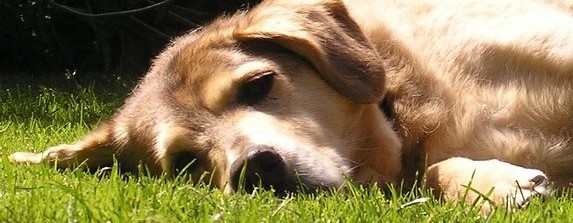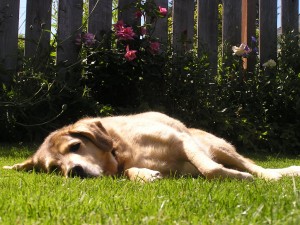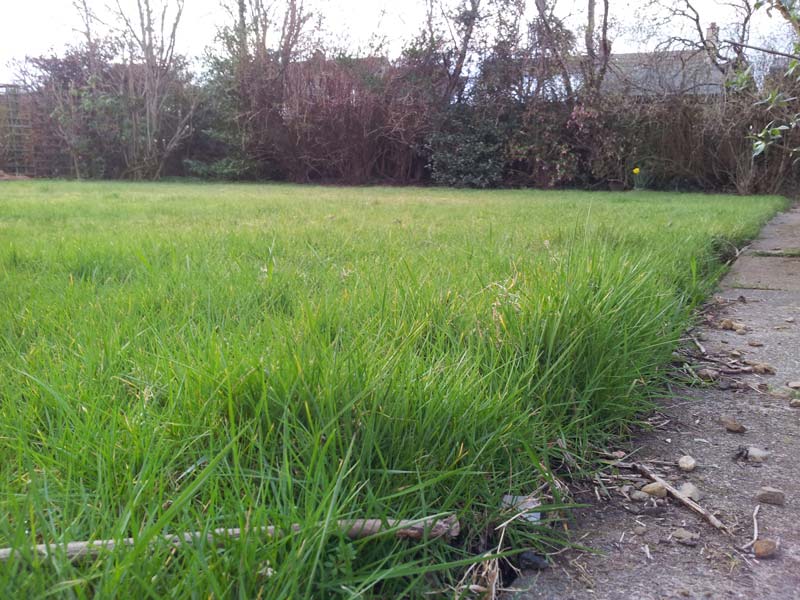
Pet-friendly Lawn Tips: Creating a Great Garden for your Pooches and Felines
Having a dog or cat does not have to mean giving up on having an attractive garden. With a little planning, you can create a smart, pet-friendly landscaping design that both you and them can enjoy.
Pet-friendly landscaping will also make your lawn and garden easier to maintain. Whether you’re getting a new dog/cat, or want to create a better outdoor environment for the one you already have, read on to learn how to transform your garden into a pet-friendly landscape.

Five steps to a pet-friendly landscaping design
1. Use pet-friendly plants
Using pet-friendly plants is the most important step to creating an outdoor environment that is safe for your dog, so make sure you know what’s growing in your garden. Lists of plants that are toxic to dogs and cats, and other pets, can be found on most gardening web sites, and from the RSPCA.
If you aren’t sure whether a certain plant is safe, you can search the lists by name. Remove any toxic plants from your landscape, as well as ones that are thorny or spiny, as they can cause eye injuries. The other option is to fence off these plants, find here, and possibly trim off lower branches to keep them out of the reach of pets. Loppers here.
Another important point is to minimise, or even better, cut out altogether, the use of slug pellets. These are extremely toxic to cats and dogs, along with many wild birds and animals.
2. Plant strategically
In addition to using dog-friendly landscaping plants, make your planting beds less tempting to your dog. One option is creating raised beds, which are less comfortable for dogs to dig in than flat ground, and also better for your poor back.
Place sturdy vegetation, such as shrubs, around the edges of the beds, and tuck more fragile plants behind them. Dogs in particular tend to favour obvious paths, so plant densely to deter your dog from running through your beds.
There are a number of plants not poisonous to cats, that do deter them, such as catnip and garlic, so some of these round planting beds can work well.
3. Provide shade
Dogs often dig to create spots to cool down. To help prevent digging, provide your dog with adequate shade. Trees are a great way to incorporate natural cool-down areas into your pet-friendly landscaping design.
Cats are bad for scratching, so provide scratching posts, instead of letting them damage shrubs and trees. Cat litter trays are also necessary to prevent them digging when doing their business.
4. Minimize turf damage
A dog can quickly wreak havoc on your lawn. The high concentration of nutrients, particularly nitrogen, in pet urine can burn your turf in the same way that over-fertilizing can. There are several measures you can take to prevent – or at least minimize – dead spots in your lawn caused by dog urine.
You can designate a certain area of your pet-friendly landscaping plan, then train the dog to do it`s business there. You can also apply water each time the dog urinates, to dilute the urine (although that requires considerable vigilance).
There are grass varieties that are more resistant, and recover quickly, after being scorched by urinating dogs. Find example here. I have several articles on this web site explaining all the different types of grasses and their uses.
It is well worth having a little seeding compost and some grass seed in your shed at all times over the growing season. Once every couple of weeks lightly rake any scorched areas, and apply the seed/compost mix. This will ensure things never get too bad.
One of the most effective preventive measures you can take is to keep your grass healthy, so it can recover more quickly and easily. Properly maintaining your lawn mower parts, including ensuring sharp mower blades, and trimming your grass to the appropriate height can help you maintain healthy turf.
5. Install artificial turf.
The last resort, but sometimes necessary, is to replace all natural grass with artificial grass. The new varieties are very natural looking, hard wearing, and easy to maintain. Find examples here. A little expensive to install, the long term saving is impressive, and it is much more environmentally friendly than concrete or paving. Well worth considering if your natural lawn is proving difficult to maintain. You can look at the cost comparisons in my article on this site.
I hope this helps you to enjoy the garden a lot more in the company of your pets.



what can my husband use on our lawn to restore where our male puppy has burnt areas with his urine.its never been a show lawn as we have five grandchildren,four of them boys.it only measures about four mtrs x ten metres.we would be grateful for your advice.elaine davis
Hi Elaine, he needs to rake the areas with a spring tine rake, apply a mix of sand and seeding compost, then rake grass seed into the mix at 15 to 20gms per sq mtre and firm with the feet. If dry weather keep it watered until germination. Wait till we get some warmer weather though. Good luck, Duncan.